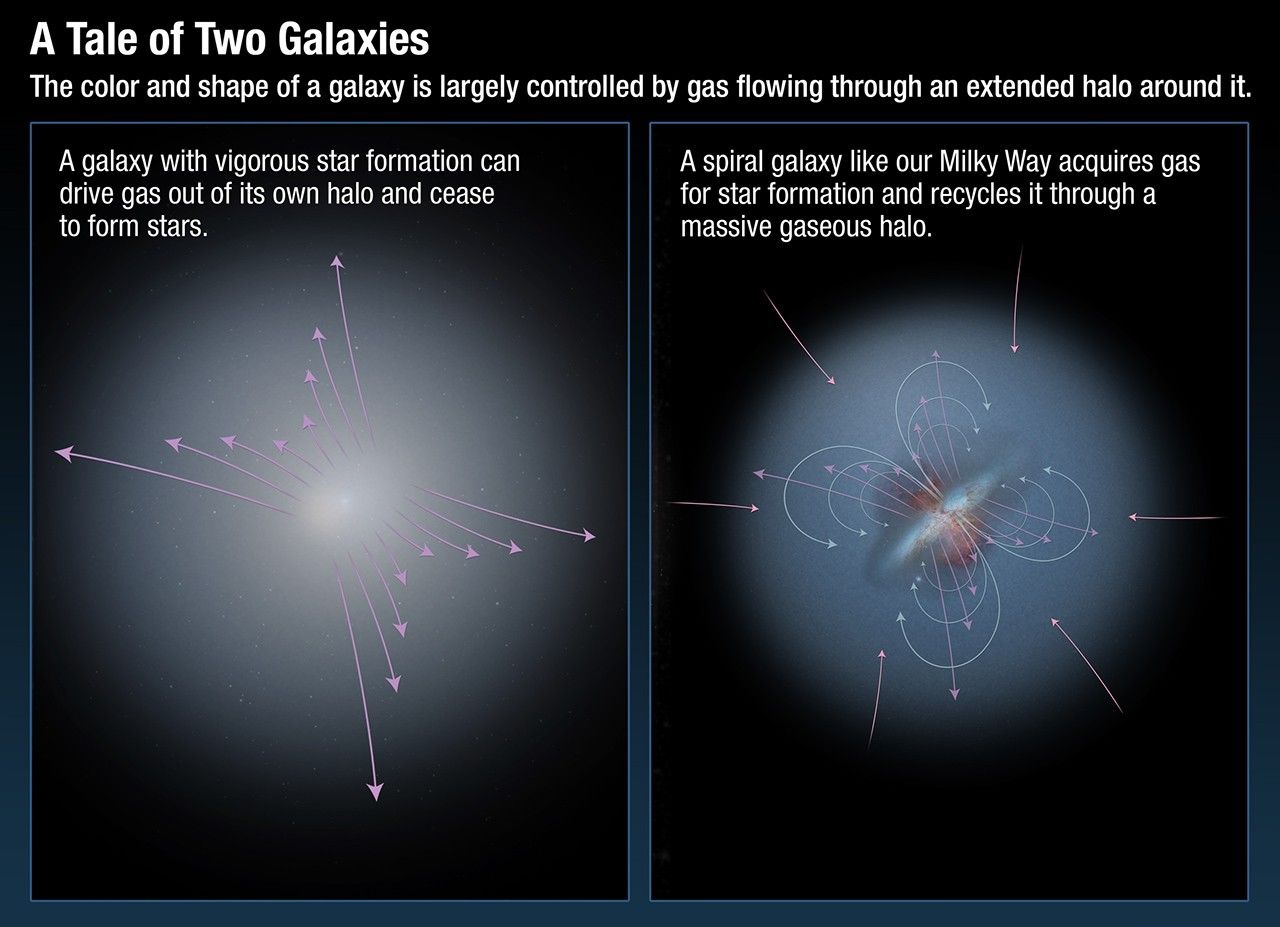
Caption: "The color and shape of a galaxy is largely controlled by gas (usually ∼ 72--75 % hydrogen (He) 25 % helium (He), 0 to 2--3 % metals by mass fraction) flowing through an extended surrounding galactic halo (including a dark matter halo). All modern computer simulations of galaxy formation and evolution find that they CANNOT explain the observed properties of galaxies without modeling the inflow and outflow processes by which galaxies acquire gas (the inflow usually of primordial cosmic composition (fiducial values by mass fraction: 0.75 H, 0.25 He-4, 0.001 D, 0.0001 He-3, 10**(-9) Li-7) maybe sometimes somewhat enriched by metals from stellar nucleosynthesis and supernova nucleosynthesis from past outflows from galaxies) and then later expel it (the outflow) after stellar nucleosynthesis and supernova nucleosynthesis have enriched it in metals. The outflows are due to either or both of supernova ejecta and AGN feedback (i.e., ejection of accreta by strong magnetic fields in the accretion disks around galaxy center supermassive black holes (SMBHs)).
The image is verified by Hubble Space Telescope (HST) spectroscopic observations showing that galaxies like the Milky Way recycle gas while starburst galaxies will lose gas to intergalactic space and become 'red and dead' (i.e., quenched galaxies) after the starburst is over. However, another condition for final galaxy quenching for large galaxies seems to be that their total mass (consisting of baryonic matter and dark matter) reach or exceed the golden mass = 10**12 M_☉." (Somewhat edited.)
Credit/Permission:
NASA,
ESA,
A. Feild, STScI
2012 /
Public domain.
Image link:
NASA's Hubble Confirms That Galaxies Are the Ultimate Recyclers.
See also
NASA: A Tale of Two Galaxies.
Local file: local link: metallicity_evolution.html.
File: Cosmology file:
gas_inflow_outflow.html.